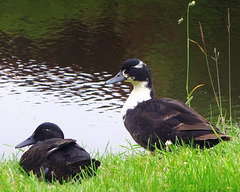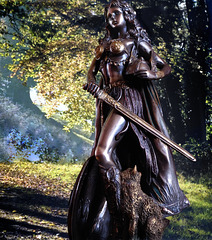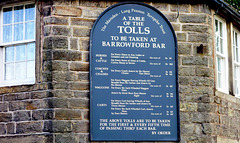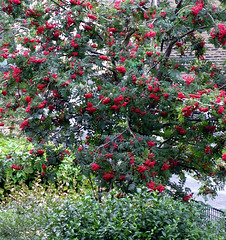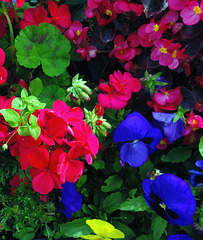
Sony RX100
Shipwreck silver.
| |
|
|
|
The 300 ft S.S. Gairsoppa was launched in 1919 by the British India Steam Navigation Company Ltd. of London, a company that got its start transporting mail between Calcutta and Rangoon. As World War II unfolded the United Kingdom enlisted the ship to help out with the war effort. Towards the beginning of the war (December of 1940), the ship was loaded full of supplies which included pig iron, tea and over 7 million ounces of silver in the form of ingots. Today the value of its cargo has been estimated at £150,000,000 and is believed to be one of the richest of any sunken vessel.
On its trip from Calcutta to Britain the ship began to run low on fuel. It was forced to set a new course on the most direct route to port. As the ship headed towards the British Isles it was spotted by German aircraft which then relayed its position to a U-Boat which was in the area. The Gairsoppa was hit by a torpedo and later sunk on February 17, 1941, approximately 300 miles off the coast of Galway. Gairsoppa lay at a depth of some 2.9 miles (deeper even than the Titanic) on the bottom of the Atlantic for more than 70 years until it was finally recovered.
In 2010 the British Government sought out the help of Florida-based Odyssey Marine Exploration to help locate the ship and try to recover the 110+ tons of precious silver. They succeeded in 2012 and ended up recovering nearly all of the sunken silver. After the success of their recovery the company decided to commemorate the ship and its rich history by producing a number of silver bars and coins minted with actual silver from the recovery. This is one of those coins.
Camera Sony RX100: Processed with Nikon Capture NX2.
Ducks by the canal.
| |
|
|
|
Unidentified ducks, possibly Mallards crossed with some other breed as I haven't seen them in these colours before, photographed by the Leeds-Liverpool canal at Burnley, North-West England. Photographed with a Sony RX100 compact camera and processed with Nikon Capture NX2.
Posing for the camera.
| |
|
|
|
The domestic goat (Capra aegagrus hircus) is a subspecies of goat domesticated from the wild goat of southwest Asia and Eastern Europe. The goat is a member of the family Bovidae and is closely related to the sheep as both are in the goat-antelope subfamily Caprinae. There are over 300 distinct breeds of goat; they are one of the oldest domesticated species and have been used for their milk, meat, hair, and skins over much of the world. Goats are among the earliest animals domesticated by humans. The most recent genetic analysis confirms the archaeological evidence that the wild Bezoar ibex of the Zagros Mountains (Iran) are the likely origin of almost all domestic goats today.
Neolithic farmers began to herd wild goats for easy access to milk and meat, primarily, as well as for their dung which was used as fuel and their bones, hair, and sinew for clothing, building, and tools. The earliest remnants of domesticated goats dating 10,000 years before present are found in Ganj Dareh in Iran. Goat remains have been found at archaeological sites in Jericho, Djeitun and Çayönü, dating the domestication of goats in Western Asia at between 8000 and 9000 years ago. Studies of DNA evidence suggests 10,000 years ago as the domestication date. Historically, goat hide has been used for water and wine bottles in both travelling and transporting wine for sale. It has also been used to produce parchment.
(Wikipedia).
Camera: Sony RX100. Processed with Nikon Capture NX2 software.
Busy Bee.
| |
|
|
|
Bees are flying insects closely related to wasps and ants and are known for their role in pollination and for producing honey and beeswax. There are nearly 20,000 known species of bees in seven to nine recognized families, though many are undescribed and the actual number is probably higher. They are found on every continent except Antarctica, in every habitat on the planet that contains insect-pollinated flowering plants. Bees are adapted for feeding on nectar and pollen, the former primarily as an energy source and the latter primarily for protein and other nutrients. Most pollen is used as food for larvae. Bees have a long proboscis (a complex "tongue") that enables them to obtain the nectar from flowers. They have antennae almost universally made up of 13 segments in males and 12 in females. Bees all have two pairs of wings, the hind pair being the smaller of the two; in a very few species, one sex or caste has relatively short wings that make flight difficult or impossible, but none are wingless. The best-known bee species is the European honey bee, which, as its name suggests, produces honey, as do a few other types of bee. Human management of this species is known as beekeeping or apiculture.
(Wikipedia).
Camera: Sony RX100. Processed with Nikon Capture NX2.
Isle of Man Silver Angel coin.
| |
|
|
|
For the first time ever, the Pobjoy Mint has issued a Silver Angel struck in 99.9% pure silver. The coin's reverse features a sculpted image of St. Michael the Archangel battling a fierce dragon. This classic depiction of the triumph of Good over Evil appeared on the very first Pobjoy Angel coin in 1984 and was awarded the prestigious "Coin of the Year Award" for excellence. The obverse of this coin features the regal portrait of Her Majesty Queen Elizabeth II. This coin is Legal Tender on the Isle of Man.
Photographed with a Sony RX100 camera.
Processed with NIkon Capture NX2.
"For over 600 years, Silver and Gold coins featuring Angels have been treasured by millions. Medieval kings and queens often bestowed Angel coins on worthy subjects and these coveted coins were believed by many to bring the bearer good luck, fortune and health. For centuries, stories of lucky Angel coins have abounded. Napoleon, King Henry VII, fighter pilots, seafarers, rescue and police heroes have testified to the Angel's powers of luck and protection.
In 1984 a new British Angel series was established by the Isle of Man. This island-Nation within the British Commonwealth commissioned the world-renowned Pobjoy Mint in London to strike the modern Angel coin series. The Pobjoy Mint is one of the oldest and most respected private mints in the world and the design that they created for the Angel series immediately garnered a Coin of the Year award in it's very first year. Since 1984 an exciting array of Angel coins have been struck in Gold, Silver and Platinum. The Angel series has become one of the most popular collector-coin series in the entire world".
(The Silver Angel Coin official collector's guide).
Independence of The Bahamas.
| |
|
|
|
A 22K Gold Bahamas $100 commemorative coin issued to celebrate the independence of The Commonwealth of The Bahamas. This coin is unusual due to the fact that it displays two dates.....1975 (the year of issue) and on the other face is the date 1973 (the year of independence) below the Queen's portrait.
The Bahamas became a British Crown colony in 1718 when Britain clamped down on piracy. After the American War of Independence, thousands of American Loyalists (taking their enslaved Africans with them) moved to the Bahamas where the Americans set up a plantation economy. After Britain abolished the international slave trade in 1807, the Royal Navy resettled many free Africans (liberated from illegal slave ships) in the Bahamas during the 19th century. Hundreds of American slaves and Black Seminoles escaped to the islands from Florida and nearly 500 were freed from American merchant ships by the Royal Navy. The Bahamas became an independent Commonwealth Realm in 1973, retaining Queen Elizabeth II as it's monarch.
(Wikipedia).
Camera Sony RX100. Processing with Nikon Capture NX2.
Euro commemorative coin (2).
| |
|
|
|
A French Gold & Silver coin / medallion issued to commemorate the introduction of the new Euro coinage that was released into circulation on January 1st, 2002. The obverse of the medal (shown here) depicts scenes and events from French history, a Gold €50 with the names of all the member countries that have converted to the Euro and a Golden portrait of the Goddess Europa. It's reverse design (posted elsewhere in my "photostream") depicts a map of Europe. This coin is made of pure ("fine") Silver with 24 carat / karat Gold gilding and weighs 20 grams (0.7 ounces).
Photographed with a Sony RX100 camera and processed with Nikon Capture NX2.
Freyja.
| |
|
|
|
In Norse mythology Freyja (Old Norse "Lady") is a Goddess associated with love, sexuality, beauty, fertility, gold, war and death. Freyja is the owner of the fabled necklace Brísingamen. She rides a chariot pulled by two cats or, when not using her chariot, rides the boar Hildisvíni (which is also said to be Freyja's human lover Otta in disguise and is the reason why the God Loki consistently accuses her of being "wanton" by "riding her lover in public"). She possesses a cloak of falcon feathers and, by her husband Óðr, is the mother of two daughters, Hnoss and Gersemi. Along with her brother, father and mother, she is a member of the Vanir. Modern forms of the name include Freya, Freija, Frejya, Freyia, Frøya, Frøjya, Freia, and Freja.
Freyja rules over her heavenly afterlife field Fólkvangr and there receives half of those that die in battle.........the other half go to the God Odin's hall, Valhalla. Freyja assists other deities by allowing them to use her feathered cloak, is invoked in matters of fertility and love and is frequently sought after by powerful Jötnar who wish to make her their wife. Freyja's husband, the God Óðr, is frequently absent. She cries tears of amber (or "red gold") for him and constantly searches for him under assumed names. Amber is plentiful in the Scandinavian / Baltic regions and is often referred to as "The Tears of The Goddess".
Scholars have theorized about whether Freyja and the Scandinavian Goddess Frigg ultimately stem from a single Goddess common among the Germanic peoples and about her connection to the Valkyries, female battlefield choosers of the slain. Freyja's name appears in numerous place names in Scandinavia with a high concentration in Southern Sweden. Various plants in Scandinavia once bore her name (before they were, apparently, "converted" to Christianity) and rural Scandinavians continued to acknowledge Freyja into the 19th century and beyond.
(Wikipedia....edited & shortened).
Camera Sony RX100. Processed with Nikon Capture NX2.
Cold-cast figurine from Nemesis Now ("Willow Hall" collection).
Toll-gate sign.
| |
|
|
|
Barrowford is a large village and civil parish situated in the Pendle district of Lancashire, North-West England, situated to the North of Nelson and part of the Nelson conurbation. At the time of the 2001 census it had a population of 6,039. Barrowford is situated on the Marsden–Long Preston Turnpike (the town of Nelson was called Marsden before the battle of Trafalgar in 1805....... it was re-named in honour of the admiral). One of the original toll houses dating from 1804–05 can still be seen at the junction with the road to Colne, complete with a table of the tolls which were paid. The toll house was restored in the 1980s and is owned by the Trust which operates nearby Pendle Heritage Centre.
For those viewers too young to remember pre-decimal British currency, the "s" in the list of prices stands for Shilling (5p in today's money) and the "d" stands for Pence or Penny (a penny was 1/12th of a shilling).
Don't walk by.
| |
|
|
|
Photographed outside a building-site (now a car park) in Barrowford, North-West England. The sign was on the outside of the site, on the public pavement (sidewalk). I think it was intended as a warning to the people working inside, not pedestrians on the outside. It doesn't seem to make much sense otherwise, as none of the construction work was anywhere near the fence and "walking by" is the only thing you can do here.
Camera: Sony RX100. Processed with Nikon Capture NX2.
"Over the hills & far away".
| |
|
|
|
Photographed in Raven's Clough wood near Brierfield in the North-West of England, U.K. I've walked past this place many times before but I've never noticed the steps as they are usually overgrown with grass and shrubs. Photo taken with a Sony RX100 compact camera and processed with Nikon Capture NX2.
Euro commemorative coin.
| |
|
|
|
A Gold & Silver coin / medallion issued to commemorate the introduction of the new Euro coinage that was released (except in the UK) into circulation on January 1st 2002. There is a different design for each country on the obverse of the medal (this is the French one.....see further down the page for the other side of this coin) and it depicts scenes and events from French history, a Gold €50 with the names of all the member countries and a Golden portrait of the Goddess Europa. The reverse design (pictured here) is common to all of the coins and depicts a map of Europe. This coin is made of pure ("fine") Silver with 24 carat / karat Gold gilding and weighs 20 grams (0.7 ounces).
Photographed with a Sony RX100 camera and processed with Nikon Capture NX2.
King Arthur (1 of 2).
| |
|
|
|
A Gold & Silver-plated medallion depicting the legendary King Arthur of Camelot (see next photo for the reverse view and more details).
Photographed with a Sony RX100 compact camera and processed with Nikon Capture NX2.
King Arthur (2 of 2).
| |
|
|
|
The famous Round Table of the Arthurian legend with the names of King Arthur's knights and the sword Excalibur. This medallion, made in 2008, has a diameter of 40mm, is made of "base metal" (non-magnetic, so probably bronze or brass) and plated with Gold and "Fine" Silver. There is a "Mint mark" (next to Sir Geraint's name) which I don't recognize. See the previous photo for the other side of this coin / medallion.
Photographed with a Sony RX100 camera and processed with Nikon Capture NX2.
Rowan Tree.
| |
|
|
|
Rowans (A.K.A. "Mountain Ash" in Britain & Ireland) are mostly small deciduous trees 10–20 m tall, although a few are shrubs. The leaves are arranged alternately and are pinnate with 11–35 leaflets; a terminal leaflet is always present. The flowers are borne in dense corymbs; each flower is creamy white and 5–10 mm across with five petals. The fruit is a small pome 4–8mm in diameter, bright orange or red in most species but pink, yellow or white in some Asian species. The fruit are soft and juicy which makes them a very good food for birds, particularly waxwings and thrushes which then distribute the seeds in their droppings. Due to their small size the fruits are often referred to as berries but a berry is a simple fruit produced from a single ovary, whereas a pome is an accessory fruit.
The best-known species is the European Rowan Sorbus aucuparia, a small tree typically 4–12 m tall growing in a variety of habitats throughout northern Europe and in mountains in southern Europe and southwest Asia. Its berries are a favourite food for many birds and are a traditional wild-collected food in Britain and Scandinavia. It is one of the hardiest European trees, occurring to 71° north in Vardø in Arctic Norway and has also become widely naturalised in northern North America.
(Wikipedia).
Camera Sony RX100.
Processed with Nikon Capture NX2.
UK Euro "Pattern" coin (1 of 2).
| |
|
|
|
In 2002 the UK issued a series of pattern coins based on the Euro. The coins were struck at the Heaton Birmingham Mint (which closed in 2003) with permission granted by the UK Government to use a new portrait of HM the Queen.
A pattern coin is a coin which has not been approved for release, produced for the purpose of evaluating a proposed coin design and not meant for circulation. They are often produced to proof standard in Gold or Silver, and as "Piedforts" (with double the thickness and weight of the standard version of a particular coin). They are collected or studied by coin collectors because of their highly-elaborate designs and their rarity....this one is a Sterling Silver Piedfort (one of only 5000 ever made to this specification). Pattern coins have been created for a variety of reasons, including sample coins for VIPs and for testing various designs and die cuts in the minting equipment.
Camera: Sony RX100.
Processed with Nikon Capture NX2.
UK "Pattern" coin (2 of 2).
| |
|
|
|
In 2002 the UK issued a series of "pattern" coins based on the Euro. The coins were struck at the Heaton Birmingham Mint (which closed in 2003) with permission granted by the UK Government to use a new portrait of HM the Queen.
A pattern coin is a coin which has not been approved for release, produced for the purpose of evaluating a proposed coin design and not meant for circulation. They are often produced to proof standard in Gold or Silver and as "Piedforts" (double the thickness and weight of the standard version of a particular coin). They are collected or studied by coin collectors because of their highly-elaborate designs and their rarity....this one is a Sterling Silver Piedfort (one of only 5000 ever made to this specification). Pattern coins have been created for a variety of reasons, including sample coins for VIPs and for testing various designs and die cuts in the minting equipment.
Camera: Sony RX100.
Processed with Nikon Capture NX2.
Summer flowers.
| |
|
|
|
A group of Summer flowers, mostly geraniums and pansies, photographed today on Brierfield railway station whilst waiting for a (delayed, as usual) train. The trains are ancient, uncomfortable and seldom run on time but the station, at least, has been improved with the addition of a small garden and flower boxes.
Camera Sony RX100 and processed with Nikon Capture NX2.
Jump to top
RSS feed- Latest items - Subscribe to the latest items added to this album
- ipernity © 2007-2025
- Help & Contact
|
Club news
|
About ipernity
|
History |
ipernity Club & Prices |
Guide of good conduct
Donate | Group guidelines | Privacy policy | Terms of use | Statutes | In memoria -
Facebook
X


